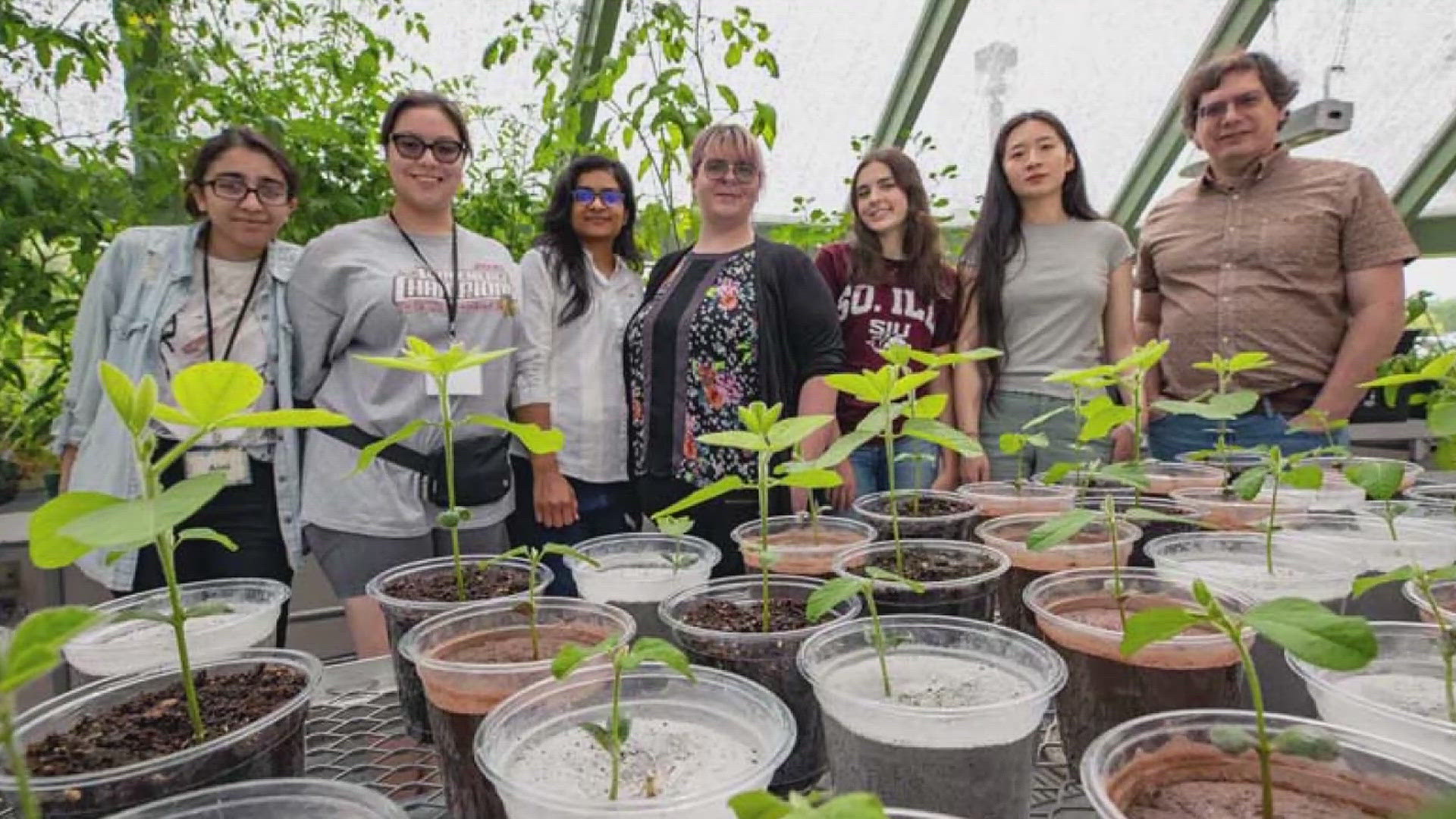CARBONDALE, Ill. — It might sound like something out of a science fiction story, but it's all-too-real for a team of Illinois students.
A group of students from Southern Illinois University Carbondale and Carbondale Community High School have been researching the effectiveness of algae to grow crops in off-Earth environments such as Mars and the moon.
Back in January, the team, known as AlgaeUnlocked, became one of just 15 nationwide finalists for the U.S. Department of Energy AlgaePrize 2023-2025 Competition. Doing so earned them $10,000 to work on the research project.
So how on (or off) Earth does this work?!
Microalgae, which, in the simplest terms is broken-down-algae, is an organism. That means it holds plenty of nutrients and vitamins.
"Here in Carbondale and the SIU, we developed a new technology called oxidative hydrothermal dissolution," said Scott D. Hamilton-Brehm, associate professor in the School of Biological Sciences and team lead of AlgaeUnlocked. OHD technology can break the algae down into those basic nutrient parts.
Places like Mars and the moon are covered in regolith, which is loose, crushed rock and dust sitting on top of a bedrock layer.
"It's really hard to grow stuff [on regolith] and it's actually pretty toxic and nasty. Plants don't like it all. But if you add this broken-down algae to it, the plants grow really well," Hamilton-Brehm said. “OHD and microalgae are a perfect combination to close carbon loops and grow plants in otherwise inhospitable soil where NASA might plan to drop a human colony."
OHD is also an environmentally friendly process. It uses heat, pressure, oxygen and water to break the complex organic materials into simple, water-soluble products. It was pioneered by SIU's Advanced Energy Research Center Director, Ken Anderson.
“Whether here in Southern Illinois or in some terraforming station on Mars, we can use OHD – if it can support humans, it can utilize OHD,” Anderson said in a press release. “So, if one day humans are attempting to colonize Mars or some other planet, and they're growing microalgae to make oxygen and other products, then they can reprocess the wastes that will be produced by using OHD and use its products to support activities like growing crops.”
The AlgaeUnlocked team has been experimenting with growing corn, cannabis and soybeans. With soybeans specifically, the team has planted seeds in simulated lunar and Martian regolith.
"We're processing the data right now, and the results are quite impressive, really," Hamilton-Brehm said.
So far, the experiment has seen cannabis and soybeans growing up to 100% more than their control counterparts.
Now, the team is raising money to get to the Algae Biomass Summit October 20-22 in Houston. They would also like to go to the National Renewable Energy Laboratory April 11-13 in Golden, Colorado for the finals of the nationwide competition they're in.
Both trips are estimated to cost $10,000 between travel expenses, registration, hotels, car rentals, gas and research supplies.
If you want to donate to the team's efforts, you can do so here. You can also check in on the team's progress through their regular videos here.
While team membership is somewhat in flux with the beginning of a new semester, the team's core student members include Hannah Phillips, Alyssa Zhan, Morgan Ruden, Chetan Singh, Alex Bechtel and Danielle Snyder.
Tune into The Current from 4 to 5 p.m. on weekdays to catch live interviews impacting you, your family and your hometown as well as all of the biggest headlines of the day.

